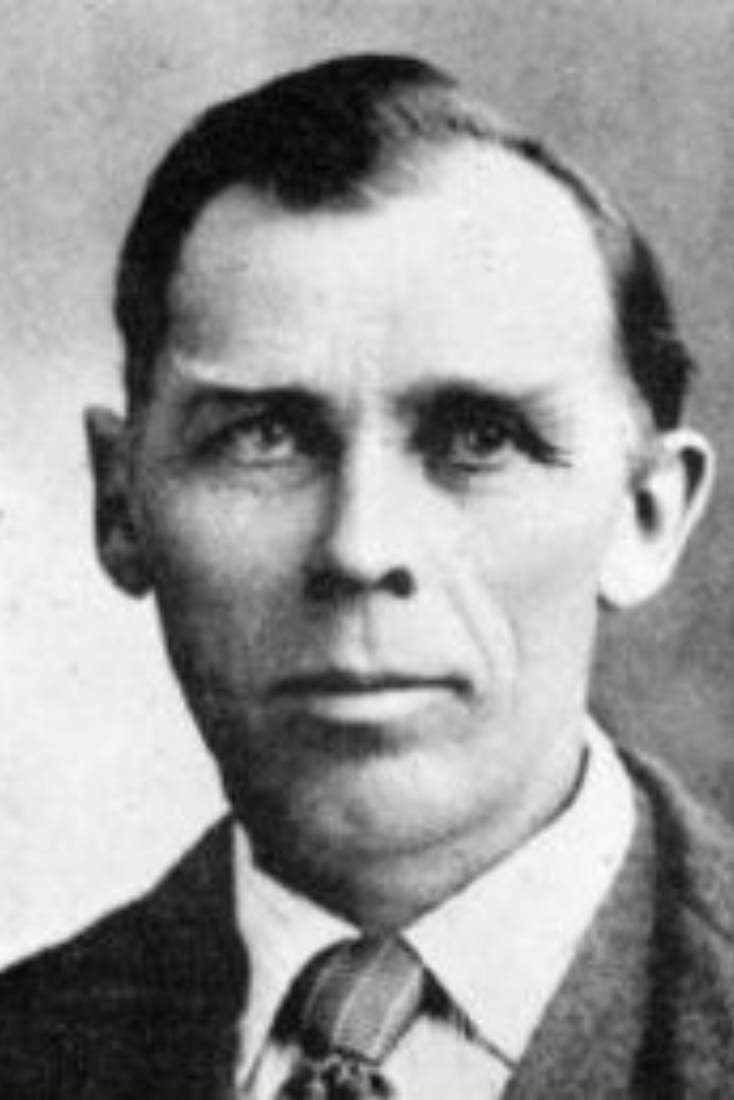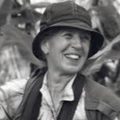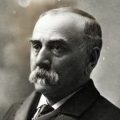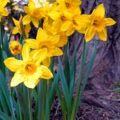Wilhelm Nikolaus Suksdorf
The Seven Suksdorfs
On this day in 1886, the botanist Wilhelm Nikolaus Suksdorf began his journey by train to Cambridge, Massachusetts, to go work for Harvard's top botanist, Asa Gray.
Now I know what you're thinking. This must be another story about a budding young botanist who makes his way to Harvard and then writes his ticket to success and fame. But that is not the story of Wilhelm Suksdorf.
Suksdorf was born in Germany, but his family soon immigrated to Iowa.
The Suksdorf's had nine children, but after their two little girls died, the Suksdorfs were a family of seven boys, often referred to as the seven Suksdorfs. (Wilhelm was number six).
Wilhelm was a sickly little boy; maybe that’s why he ended up being such a homebody. When his older brothers went to Ames Iowa for college, botany was part of the curriculum. (Imagine that?!) It was through his older brothers that Wilhelm learned of Asa Gray's botany manual. After he heard about it, he wanted one for himself. So, when he was twenty years old, he bought himself a copy, and he used it to learn about the plants around the family's Davenport Iowa farm.
After his older brothers went West to find their fortunes, it wasn’t long before the entire Suksdorf family followed suit. They ended up buying land along the Columbia River in the Pacific Northwest, and they settled in an area they named Bingen.
Wilhelm attempted to study botany at Berkeley. But, after two years, he decided to quit. Suksdorf was 26 when he left Berkeley and returned to the family farm to help his brothers with their dairy operation.
Back in Iowa, the Suksdorfs had been part of a large German immigrant population. They were able to continue to speak German at home on the farm and with a fair number of other German settlers in the county. But, when the Suksdorf family moved west, the dense concentration of German families did not exist. Wilhelm's lack of formal schooling and his isolation on the farm made him uncomfortable communicating in English. As a result, much of his botanical work was written and documented in German.
As fate would have it, Asa Gray's manual was not helpful with the flora in the Northwest. Botanically speaking, Suksdorf was in uncharted territory. The lack of information spurred Wilhelm to reach out to none other than Asa Gray. Gray wrote him back. Corresponding with Gray gave Suksdorf something to do outside of the farm, yet it allowed him to stay home (where he preferred to be).
Suksdorf would collect specimens and send the ones he wasn’t sure of to Gray and then wait for a response as to the identification. In the beginning, Suksdorf may not have appreciated how this relationship was actually a true quid pro quo. See, Suksdorf's work was an answer to prayer for Gray, who was working on a flora of North America. There was nothing Gray needed more desperately than specimens from the Northwest. In recognition of his work, Grey named a violet for Suksdorf. This was an immense honor, on Suksdorf did not expect, and it turned Suksdorf into a true Gray disciple.
Things carried on this way for the next seven years until 1885 - which proved to be a dreadful year for Suksdorf. At this point, Suksdorf was a 35-year-old bachelor, living at home with his parents, working on the farm with his brothers, and botanizing when he had the inclination, time, and energy. But in October of that year, both of his parents succumbed to sickness; it was something like the flu. But, they didn't bounce back. They grew sicker and sicker until, on October 22, they both died.
Suksdorf moved in with his younger brother, Theodore, and his wife. We don't know for sure how that went, but we do know that Suksdorf's sister-in-law attempted to get him out of his shell, out of his grief, and into the real world.
By spring, she had written a letter to Dr. Asa Gray at Harvard. One can almost see her rifling through Wilhelm's correspondence to find Dr. Gray's address. She told Gray about Wilhelm's isolation, but also how kind and conscientious he was, and she wondered if there might be a museum or a botanical garden that could use some help.
Asa Gray must have been moved by something; whether it was all of those specimens and letters that Suksdorf had sent over the years or the somewhat desperate plea posted by his sister-in-law, we don't know for sure. What we do know is that in a little over two weeks, Gray had put together an offer for Suksdorf:
"Come to Harvard. Be my assistant. Earn $500 the first year, $600 the second year, and so on, all the way up to $1000 a year."
And, Gray also offered a career path and mentorship. What was not to love?
True to form, Suksdorf went and declined the offer, saying something about not wanting a life indoors doing office work; and that he was sorry to disappoint his well-intentioned, but nosy, sister-in-law.
You can imagine the reaction of his family. His brothers took him to task for rejecting the incredible offer. Their disappointment and frustration were made clear. In turn, Suksdorf handled it in the only way he knew how: escaping to nature... for three weeks. If nothing else, the hiatus gave Wilhelm time to think.
Incredibly, when Suksdorf returned home, Gray had written again and asked him to reconsider.
Whether it was Gray's persistence, his family's badgering, or his self-reflection, by the end of July, Suksdorf relented. And so, it was on this day, in 1886, that Suksdorf found himself boarding a train headed to Massachusetts to work with his mentor, Asa Gray.
It truly was the opportunity of a lifetime. For a little over a year, Suksdorf enjoyed working directly with Gray. He had finally found a place of acceptance outside of his immediate family. But it was short-lived.
Four days after Thanksgiving in 1887, Gray was at home and coming down the stairs for breakfast, when he suddenly lost control of his arm and hand. Three days later, he lost control over his speech. He languished in bed in complete silence for two months and died at the end of January on the 30th in 1888.
Suksdorf had lost his mentor, and grief consumed him to the point that Gray's wife, Jane, had to send him to an institution to recover.
When he was discharged, Suksdorf discovered that Gray’s position had been filled by a man named Sereno Watson. Watson was a colder personality than Gray; he didn’t see the point in coddling Suksdorf and Suksdorf could see the writing on the wall; he wasn’t a fit with Watson. For a homebody like Suksdorf, the natural decision was made; he was going home.
Towards the end of his botanical career, Suksdorf was a special fellow at the herbarium of Washington State University. He collected 150,000 specimens, including 70 new species, over the course of his lifetime. Many plants have been named in his honor. Today, there is a Suksdorfia chapter of the Washington Native Plant Society, and it is made up of a great group of native plant enthusiasts in the Gorge. They sponsor several great hikes and educational events throughout the year.
Suksdorf died as the result of a tragic train accident. On Oct. 3, 1932, Suksdorf arrived at the depot in his hometown to take the train to Portland. He stepped onto the track to flag the train, but it did not stop, and Suksdorf was thrown against the wall of the depot. He was 82 years old.
This post was featured onThe Daily Gardener podcast:
helping gardeners find their roots,
one story at a time






